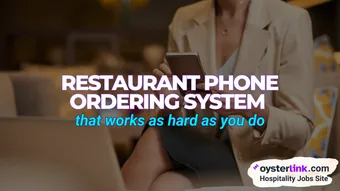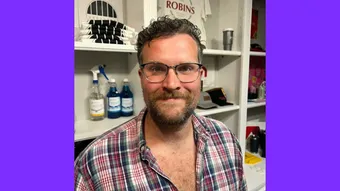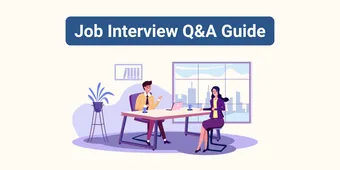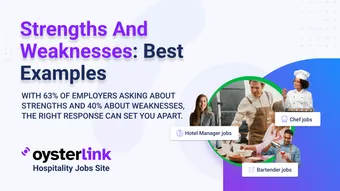Who is Austin Legge?
Austin Legge is a 29-year-old Seattle native who worked as a Barista for nine years at several Starbucks stores. Most of these stores were in high-foot-traffic areas — such as Seattle's University District — where he was able to interact with quite a diverse set of customers.
We’ve recently sat down with Austin to talk about what it’s like working front-of-house for one of the world’s largest coffee companies. Additionally, he provided us with insights on what skills and qualities one needs to grow and succeed as a Barista.
So, if you’re thinking of applying for a Barista job in your local cafe but aren’t sure if it’s the right role for you — read on for the full interview.
Tell us about your experience working as a Barista.
Austin Legge: I started working as a Barista in the fall of 2013, a bit after I graduated high school. I worked for what was then the local coffee company, now it’s a little bit bigger… [it’s] Starbucks. And it was a really awesome experience.
Being a Barista is not just about getting to work in the food service industry but also learning about customer service — especially when you work at a coffee shop like Starbucks.
How did you come across your first job as a Barista?
Austin Legge: Back then I was just looking for kind of a quick summer job. My parents suggested that I [apply for a job] at the local Starbucks down the street.
So I went to that store and asked if they were looking for part-time Baristas because I wanted to see if they had any openings. And they said, "Yeah, just come back [with your resume] and we’ll have an interview."
Speaking of that first job — what's one thing you remember from your first job interview for the role of Barista?
Austin Legge: “I remember one of the things they asked me about that came up a couple of times during the interview was how open I was to learning new things and learning on the job.
I think this is something they’ll ask especially if you have no previous experience.
Working as a Barista, there’s a lot of stuff to know and people [customers] will have a lot of questions. So, being able to learn as you go is a big part of starting at a job like that.
Is there a piece of advice you got that helped you advance or perform effectively in this role?
Austin Legge: Yes, there’s this biggest piece of advice I got that really helped me get to the next level [of my career as a Barista]. Someone told me to anticipate the customer’s needs; whether that’s just handing out a straw [to go] with an iced drink or putting a sleeve on a cup of hot coffee.
Just adding that little extra step [without being asked] really makes a difference to the customer and they feel like they’re getting a "luxury" coffee experience.
Can you recall a time when you went above and beyond to personalize a customer’s experience?
Austin Legge: Yeah, there were a couple of times. I mean, Starbucks is famous for [starting the trend of] writing short messages on customers’ cups.
So there were a few times when someone would come up and ask, "Hey, could you write happy birthday on my friend’s cup? She doesn’t know that it’s a surprise" or something like that.
And it was always a special moment to be able to be part of those kinds of experiences with people who come to the store every day to get their coffee
If you can name only a single most important trait (not a technical skill) to succeed as a Barista, what would it be and why?
Austin Legge: I think it would be having the ability to just be yourself and interact with the customer. For a lot of people, having that positive interaction with your Barista helps build a little bit of trust and friendship.
Some of them come to your store every day for their coffee while others only visit once in a while.
Either way, being able to build rapport with them helps make their customer experience a bit more impactful, and that’s something that they often remember.
This in turn could lead to them coming back more often.
It doesn’t even have to be anything major; it can just be something as simple as asking them like, "Hey, how’s your day going?" and actually listening to their answers. You can even reply with something like, "Oh, that’s great! Hopefully [this drink] will add on top of that great day you’re already having."
I think customers appreciate when the Barista makes that small effort to bring some positivity to their day, no matter how it’s going.
What is your approach to handling customer requests/demands that are unexpected or out of the ordinary?
Austin Legge: Well, we did have our fair share of extra requests. I think the best way to approach those is to just go in, let the customer know what you’re able to do just to set expectations and then try to execute [that request] as best as you can.
Sometimes it works out and the customer loves it, and sometimes it doesn’t. In those situations where customers feel like they didn’t get what they paid for, it’s best to just say, "Hey, I’m really sorry we didn’t live up to your expectations" and then — if it’s possible — offer them a something extra or something else, and hopefully they appreciate it that effort.
What was the oddest request you've received for a beverage order?
Austin Legge: There have been a few odd requests. I think one of the more common ones would be people having very exact orders for the amount of ice — down to the number of cubes in their drink.
But then I’d also get the crazy, off-the-wall requests like, "Hey, can you blend a breakfast sandwich into a cappuccino?" Yeah… that happened, but crazy stuff like that only happens occasionally.
Did you actually fulfill those unusual requests?
Austin Legge: The breakfast sandwich blending one, no. As for the ice cube one, usually we would try our best but you know… a lot of times, people wouldn’t actually notice.
A lot of times, just going along with someone’s request is really all they want. I mean you do have customers who come in and sometimes that’s one of the few times they have control over a situation — and I get that.
So sometimes, allowing them to have that little ‘treat’ can circumvent a lot of the trouble they might cause otherwise.
What are your tips for negotiating a higher salary as a Barista?
Austin Legge: Well, you do have to get the groundwork in for working as a Barista. [This includes] learning all the basics and being able to execute some of the more difficult drinks.
It’s also about working on your craft; being able to craft a delicious beverage every time and polishing the skills needed for that are very important.
If you’re able to master your craft along with customer service and being a positive person in the workplace makes you a really valuable asset [to your employer].
In your own opinion, what should be the standard tip amount or tip percentage that customers should give to a Barista?
Austin Legge: As a Barista, tipping $1 per drink is a good rule of thumb. But as a customer, I personally think that tipping should not be a thing. I think that service workers should be paid a little more and tipping should be done away with altogether as a practice or norm.
How much was the highest tip amount you’ve received directly?
Austin Legge: My then-colleagues and I got some large tip amounts occasionally when we’d cater for a morning meeting — or something like that — and there would be a large coffee order. Those usually came with big tips.
Another instance that stood out to me most was that one time I helped a customer carry an order to her car. She was on the older side and she really ordered a lot of things so I took the initiative to help out. She really appreciated that and gave me a $10 tip.
Normally we [at Starbucks] aren’t supposed to take individual tips but she really specified like, "This is just for you" and I thought that was really nice of her.
How would you compare Seattle’s cafe culture to those of other major US cities?
Austin Legge: I would say Seattle has a pretty unique cafe culture historically. At one point we had one of the largest concentrations of cafes within a small radius, specifically in the downtown area. Unfortunately I think now, that number has dwindled down but it seems like we have more independent coffee shops than ever; so many fantastic, cool places to get a cup of coffee.
In fact I have a few friends who work at Anchorhead; one of them works as the Head Barista there and she does all the training. She even once got to teach Kenji Lopez-Alt how to make latte art.
So yes, there’s still a really cool coffee culture in Seattle and I think it probably tops most of the U.S. — with maybe the exception of New York.
Why having the right attitude for the job is key to success
Our interview with Austin shows that having the right attitude as a Barista comes down to two things:
- Being willing to learn and improve, especially if you’re a beginner
- Ensuring that customers feel taken care of
If this interview inspired you to apply for a Barista job, we’ve prepared several interview questions and sample answers that will help you land the role.
On the other hand, if you want a step-by-step process for learning the essential technical skills, check out our full guide on how to become a Barista.







Loading comments...